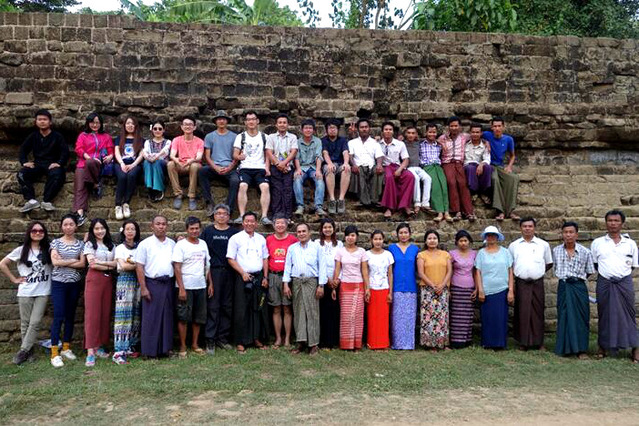
NANJING, Oct. 3 (Xinhua) -- Zhou Xiaodi, a professor at Southeast University (SEU) in the east Chinese city of Nanjing, can still remember his first glimpse of Mrauk-U, an ancient city in northern Rakhine State, Myanmar.
We took a boat up the river, and it was late at night when we reached Mrauk-U. The ancient city is nestled among the mountains, and on top of almost every hill, there is a pagoda, he recalled. The lights from the pagodas were reflected in the water mist on the river, making the whole scene quiet and layered.
In 2017, a team of teachers and students from the School of Architecture at SEU, including Zhou, was invited by the Ministry of Religious Affairs and Culture of Myanmar to participate in the preliminary work of Mrauk-U's application for becoming a UNESCO World Heritage Site.
With equipment such as drones and 3D laser scanners, they came to the ancient city on Jan. 20 of that year and became the first foreign professional team to systematically investigate the preservation of the site.
In the past 20 years, SEU has worked closely with UNESCO to preserve cultural heritage in Asia. In 1998, the UNESCO Chair in Cultural Resource Management was established at SEU. Three years later, in collaboration with UNESCO, SEU translated a handbook on the management of cultural heritage, introducing the concept and method of UNESCO's heritage preservation.
Due to the lack of timely and effective protection, the original materials of Mrauk-U were almost non-existent, which does not meet the basic requirements for world heritage application. So, the Chinese team decided to start with the basic geographic information and carry out detailed mapping of the site.
Once the ancient heritage is damaged, it has to rely on basic data to be repaired, said the team leader Dong Wei. Some ancient buildings in Myanmar were damaged and then repaired with cement due to the lack of original materials. It is not only a violation of the requirements for a world heritage bid but also leads to secondary damage.
Over the past three years, the team has mapped 112 ancient pagodas and monasteries in Mrauk-U and completed a high-precision map of the ancient city's core area and an area of 30 square km around it. They also built a visual geographic information database and worked out plans for Mrauk-U's protection and development and the management of world heritage application.
The team members were also involved in Nepal's cultural heritage conservation efforts.
The strong earthquakes in 2015 caused damage to a number of key ancient buildings in the Kathmandu Valley of Nepal, including 12 World Heritage Sites.
Since 2017, Ren Sijie, a teacher with SEU, has led nearly 20 undergraduates to carry out field mapping in Nepal every year. By 2019, the team had completed the surveying and mapping of two World Heritage Sites, including the Changu Narayan Temple complex, and one property on the tentative list for World Heritage Sites in Nepal.
Last year, SEU was selected as the network secretariat for the Asian Academy for Heritage Management, which was established by UNESCO and the International Centre for the Study of the Preservation and Restoration of Cultural Property to strengthen and promote heritage management education in the Asia-Pacific region. It also established formal partnerships with two universities in Nepal -- Purbanchal University and Tribhuwan University -- in the field of conservation of historical monuments.
Our faculties, architects and students gained valuable knowledge and application of modern technology, including photogrammetry, drone survey and 3D laser scanning (from the SEU team) ... during the study period. They were happy to assist you and share their knowledge with you. I am looking forward to future collaboration, said Sujan Maka, principal of Khwopa Engineering College affiliated to Purbanchal University.
Over the past few decades, China has experienced rapid and large-scale urbanization and accumulated rich experience in the field of new city development and ancient architecture protection, Dong said. We hope to train more cultural heritage conservation professionals for Asia and make contributions to the scientific development of Asian cities.